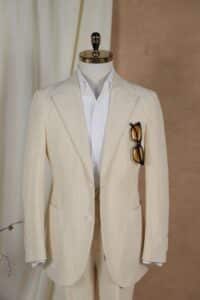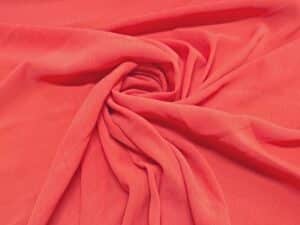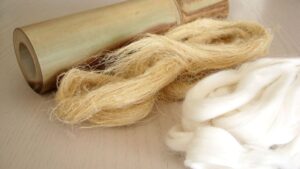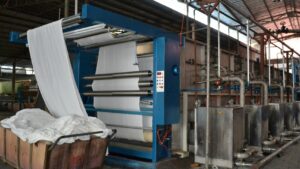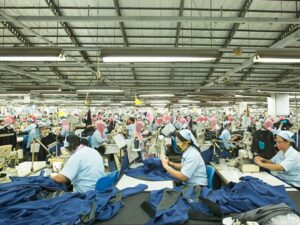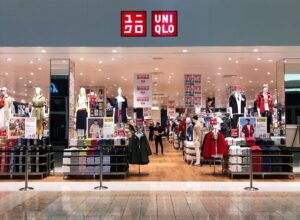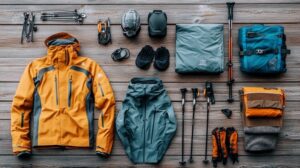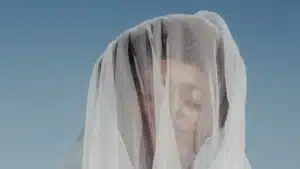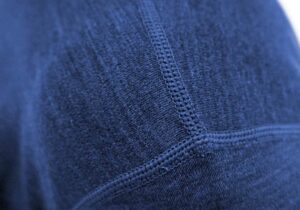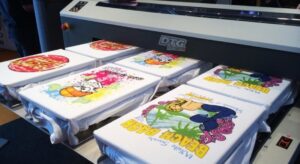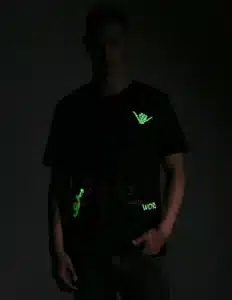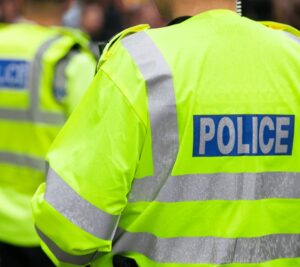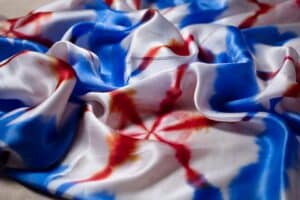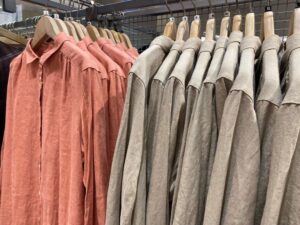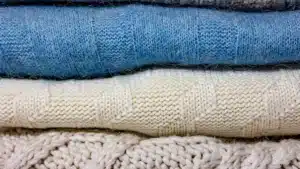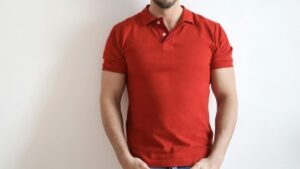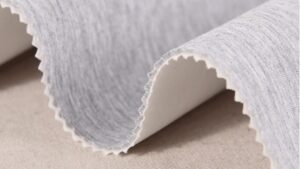
A coverstitch is a special stitch used in making clothes. It keeps fabric edges neat and strong while staying stretchy. You can find it in clothes like sportswear or t-shirts. This stitch makes seams tidy and helps clothes last longer. It also makes the clothing look nicer and more professional.
Key Takeaways
Coverstitches make seams strong and stretchy, perfect for activewear.
Coverstitching stops fabric from fraying and makes clothes last longer.
What Is a Coverstitch and How Does It Work?

Definition and Purpose of a Coverstitch
A coverstitch is a special stitch that makes seams strong and stretchy. It is often used in clothes like t-shirts, swimwear, and activewear. Its main job is to keep fabric edges neat while staying flexible. Unlike regular stitches, it creates straight rows on top and loops underneath. This design helps seams stay flat and secure, even on stretchy fabrics.
Fun Fact: A coverstitch can also be used for decoration. Many clothing makers use it to add stylish designs to garments.
How a Coverstitch Machine Operates
A coverstitch machine uses several needles and threads to make its unique stitch. It usually has two or three needles and a looper to form the stitch. The needles sew straight lines on the fabric's surface, while the looper makes chain-like loops underneath. This lets the stitch stretch with the fabric, which is great for flexible clothing.
The machine works by adjusting stitch size and seam width. Smaller stitches make seams stronger, while wider seams cover more fabric. Advanced machines can predict thread use to save materials.
Here’s a quick look at common stitch types used in coverstitch machines:
Stitch Type | Needles | Threads | Description |
|---|---|---|---|
Cover stitch 602 | 2 | 4 | Two needles and four threads for double recovery. |
Chain stitch 605 | 3 | 5 | Three needles and five threads for various uses. |
Chain stitch 607 | 4 | 6 | Four needles and six threads for flat, stretchy seams. |
These stitch types let you choose the best option for your fabric and design.
Key Features of a Coverstitch Machine

Modern coverstitch machines have features that make sewing easier and faster. Here are some important ones:
Fast Sewing: Most machines sew up to 1,100 stitches per minute, great for big projects.
Easy Threading: Color-coded guides make threading simple, even for beginners.
Adjustable Stitch Size: Change stitch length and width to fit your fabric.
Differential Feed: Stops fabric from wrinkling, especially stretchy materials.
Free Arm: Helps sew small areas like cuffs and sleeves.
Thread Cutter: Cuts threads automatically to save time.
Tip: If you're new to coverstitch machines, pick one with tension release. It makes removing fabric easier and protects your project.
Here’s a table showing some technical features:
Feature | Description |
|---|---|
Stitch Quality | Makes neat, even stitches for professional results. |
Easy Threading | Guides make threading simple and fast. |
Adjustable Stitch Size | Lets you change stitch length and width for projects. |
Stitch Speed | High speed sewing, up to 1,100 stitches per minute. |
Differential Feed | Prevents wrinkles in stretchy fabrics. |
Free Arm | Helps sew tight spaces like sleeves and cuffs. |
Thread Cutter | Cuts threads quickly for faster finishing. |
Tension Release | Makes removing fabric easier without damage. |
Chain Stitch Capability | Adds decorative seams or temporary stitches. |
Number of Needles | Usually 2-3 needles for different stitch styles. |
Presser Foot Lift | Makes it easy to sew thicker fabrics. |
Looper System | Affects how easy the machine is to thread and use. |
These features make the machine useful for both beginners and experts.
Applications and Benefits of Coverstitches in Manufacturing
Common Uses in Garment Production
Coverstitch machines are very important in making clothes. You can see their work in items like t-shirts, leggings, and swimsuits. These machines make hems strong and stretchy, which is great for flexible fabrics. They also add decorative stitches to make clothes look stylish.
Coverstitching is not just for fashion. It is also used in other industries. For example, car seats and furniture often use coverstitching for a neat and durable finish. Leather goods and shoes, especially luxury ones, also benefit from its precise stitching.
Industry Sector | Benefits of Coverstitch Machines |
|---|---|
Strong, neat stitching for car seats and furniture. | |
Automated machines improve precision and speed. | |
Footwear & Leather Goods | Helps in making high-quality leather shoes and bags. |
Technical Textiles | Used in protective gear and performance fabrics. |
Advantages of Using a Coverstitch Machine
Coverstitch machines have many benefits. First, they save time by sewing up to 1,100 stitches per minute. This makes them great for making lots of clothes quickly. Second, they create neat seams that make clothes look professional.
These machines can handle many types of fabrics. Whether the material is thin or thick, they adjust easily. They also reduce fabric waste by sewing precisely, which saves money over time.
For businesses, using coverstitch machines can make customers happier. Strong seams mean fewer returns and complaints, which builds trust with buyers.
Importance for Stretch Fabrics and Activewear
Stretchy fabrics like spandex and jersey need special stitching. Regular stitches can break when stretched. Coverstitching fixes this by making seams that stretch with the fabric. This is why it’s perfect for activewear, swimwear, and athleisure.
The stitch pattern of a coverstitch machine is unique. On the front, you see straight lines, and on the back, it looks like a serger stitch. This keeps the fabric flat and stops it from fraying. It also makes the garment stronger, which is great for sports and exercise.
Feature | Description |
|---|---|
Process | Makes parallel stitches on the front and serger-like stitches on the back. |
Advantages | Perfect for stretchy fabrics, adding strength and flexibility. |
Disadvantages | Needs special machines and costs more. |
Trending in | Popular in leggings, swimwear, and activewear. |
Coverstitching helps make clothes that are both stylish and durable. This is especially important for activewear, where comfort and strength matter most.
Coverstitching vs. Other Stitching Methods
How Coverstitching Differs from Overlocking
Coverstitching and overlocking are used for different tasks. Coverstitching is great for hemming and topstitching. It makes hems neat and strong. Overlocking joins fabric, trims edges, and stops fraying. Unlike overlock machines, coverstitch machines don’t have blades to cut fabric.
Feature | Coverstitching | Overlocking |
|---|---|---|
Main Use | Hemming and topstitching | Joining fabric, trimming, and stopping fraying |
Blade Feature | No blades for cutting | Has blades for trimming |
Stitching Ability | Makes neat, strong hems | Creates stretchy, strong seams |
If you need to hem stretchy clothes or add designs, use coverstitching. Overlocking is better for finishing raw edges and sewing fabric pieces together.
Comparing Coverstitching to Straight Stitching
Straight stitching is simple and used in many sewing projects. But it’s not as flexible or strong as coverstitching. Coverstitching uses two or three needles to make stretchy stitches. This is perfect for fabrics that stretch. The back of a coverstitch has a ladder-like design. This adds strength and stops fabric from fraying.
Here’s how they compare:
Coverstitching: Stretchy and strong, great for activewear and stretchy fabrics.
Straight Stitching: Simple but not good for stretchy materials.
For leggings or t-shirts, coverstitching works best. Straight stitching is better for non-stretchy fabrics or simple designs.
Special Features of Coverstitch Machines
Coverstitch machines have advanced tools that make them unique. The Seam Tightening System™ keeps looper threads tight for flat, neat seams. The Schmetz ELX705 needle system reduces skipped stitches for professional results. The differential feed system stops fabric from puckering or stretching too much.
Feature | Description |
|---|---|
Seam Tightening System™ | Keeps looper threads tight for flat, neat seams. |
Superior Needle System | Uses Schmetz ELX705 needles to avoid skipped stitches. |
Differential Feed System | Prevents puckering and overstretching on tricky fabrics. |
These features make coverstitch machines great for high-quality sewing. Whether hemming activewear or adding decorative stitches, they provide precision and durability.
Garments and Projects That Use Coverstitching
Examples of Clothing Items (e.g., Activewear, T-Shirts)
Coverstitching is important for making stretchy clothes. It is used in t-shirts, activewear, and baby onesies. This stitch keeps hems flat and seams strong after many washes. Baby onesies often use seam binding for comfort and flexibility. Merino cardigans may have coverstitched pockets for style and strength.
Home Sewing Projects Suited for Coverstitching
Coverstitching is great for home sewing projects. You can hem t-shirts, sew leggings, or add designs to clothes. It works well for baby clothes and sportswear too. A coverstitch machine helps you make neat seams on stretchy fabrics.
Making baby onesies or merino cardigans is a good way to practice. These projects need strong seams and clean finishes. Coverstitching makes your sewing look professional and last longer. Beginners and experts can use this technique to improve their work.
How Coverstitching Enhances Garment Quality
Coverstitching makes clothes stronger and more flexible. It stops fabric from fraying and keeps seams neat. This is very useful for activewear, which needs to stretch and stay durable.
Clothes made with coverstitching look polished and last longer. The straight stitches on top and loops underneath give a professional finish. Whether sewing for yourself or selling items, coverstitching improves quality and makes your work stand out.
A coverstitch makes seams strong and stretchy, helping clothes last longer. Its special design and many uses make it important in sewing. It’s perfect for activewear, t-shirts, and other stretchy garments. With a coverstitch machine, you can create neat finishes that look professional and impressive.
Tip: Learning coverstitching can boost your sewing skills and garment quality!
FAQ
1. What fabrics are best for a coverstitch machine?
Stretchy fabrics like spandex, jersey, and knits work great. These fabrics need strong and stretchy seams, which the machine provides.
Tip: Test your fabric first to check if it works well!

